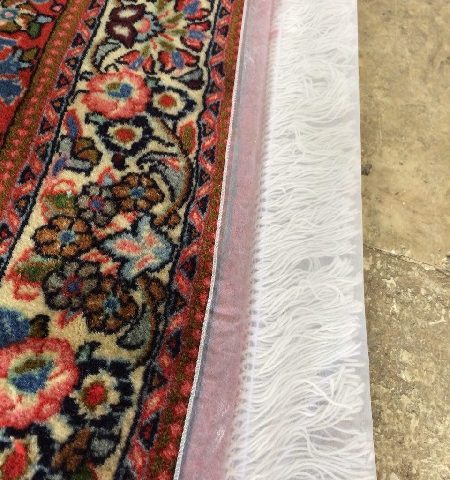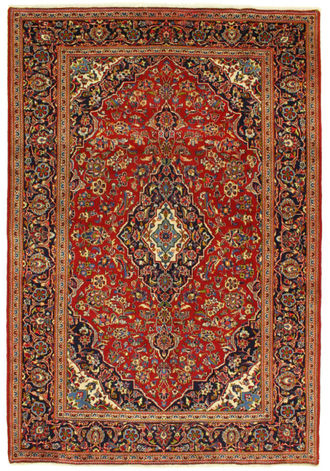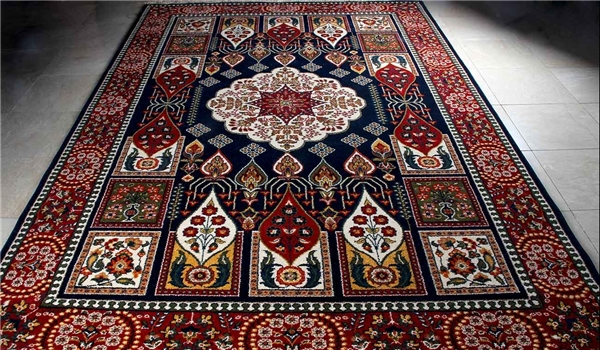
Root
The roots of hand-woven are among the most vulnerable areas. They are
always damaged due to contact with their surroundings. Root injuries include
rupture, cut, burn, and rot.
Restoration:
The methods of root woven restoration are varied. In these methods, defective or
damaged roots are completely restored. In some repair workshops, they sometimes
use ready-made wells. Here are two methods of brain root and abdominal
eradication.
Brain Root:
In this method of rooting, after fixing the rug on the board, knit
the nails parallel to the edge of the work piece and at the appropriate distance
to the desired root length. Then make a thread and needle that is proportional
to the diameter and type of work. Next, tie the end of the thread to the first
nail and insert the needle into the first arch that has no root. To return the
needle to the sorghum, remove the needle tissue from the distance between the
two arches in the carpet. Loop the yarn around the nail and continue this
process until the roots are completely destroyed. If the needle is flat or the
carpet is flat, the needle is returned from the second arch of the knot. After
finishing the eradication work if necessary, and if only for the purpose of
repairing the root head, as needed by carpet weaving or carving operations,
coordinate the rooting with the original conditions. After removing the carpet
from the board and trimming and combing the roots, trim them to fit the length
of the original rug.
Eradication of the Batlama Method:
Literally, an Azeri word means to connect. In this method of rooting,
first prepare a cotton needle thinner than the original fork, and then make a
fitting yarn similar to the rug, to the amount needed for the lost roots. Fix
the rug like a brainwashing method on the board. Then loop the yarn around the
first nail along the first damaged spike. Next, remove the needle and thin
thread from the first damaged arch, after looping into the fork, return the
needle to the same arch if the rug is first, and to the small arch if it is
half-level, and if flat. Take the second arc. Keep doing this until the fracture
of the missing roots is completed.


